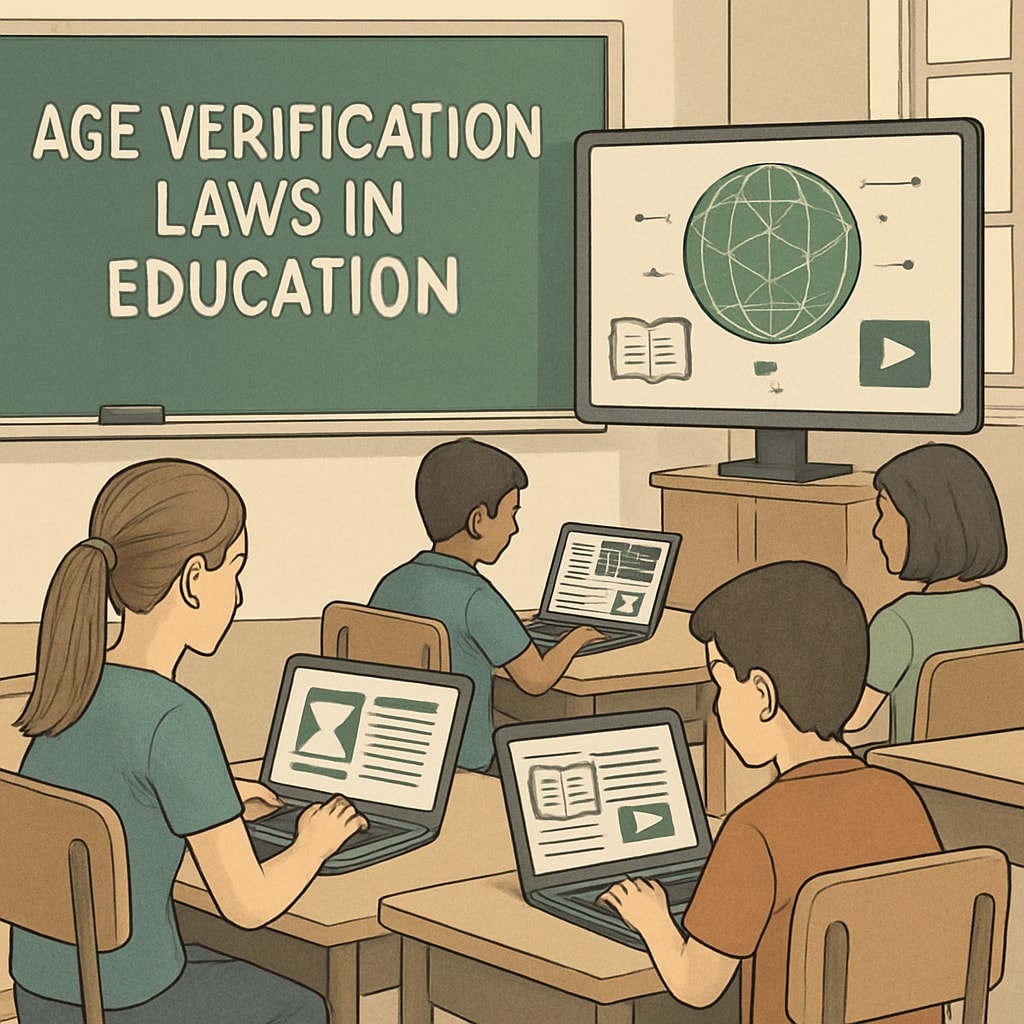Age verification, content restrictions, and internet censorship laws are becoming increasingly prevalent in the United States, with states enacting measures aimed at protecting minors from harmful online content. However, while these laws are designed with good intentions, they may inadvertently create a “digital knowledge wall,” limiting students’ access to critical K12 educational resources. This raises concerns about the balance between safeguarding minors and preserving their right to access diverse information sources.
The Rise of Age Verification Laws Across U.S. States
Over the past few years, many U.S. states have introduced laws requiring websites to implement age verification systems to restrict access to adult or potentially harmful content. For example, states like Louisiana and Utah have mandated digital platforms to verify users’ ages before granting access to certain materials. While this approach aims to protect children from inappropriate content, the practical implications for educational environments are complex.

Age verification systems often rely on methods like government-issued IDs or third-party verification services. For students under 18, these requirements can create barriers to accessing legitimate educational resources on topics such as health, science, and social studies. As a result, educators and parents are concerned that these measures might inadvertently stifle curiosity and limit learning opportunities.
Potential Impact on K12 Education and Learning Resources
One of the most significant challenges posed by age verification laws is their impact on K12 education. Educational websites and platforms often provide content that covers sensitive but essential topics, including human biology, mental health, and historical events. These are crucial for fostering well-rounded learning and critical thinking skills among students.

However, due to stringent content restrictions, some of these platforms may opt to block access entirely or implement cumbersome verification processes that discourage use. For example:
- Health education websites discussing topics such as puberty or mental health may be classified alongside adult content, limiting accessibility.
- Historical archives containing images or descriptions of war, civil rights struggles, or other significant events could face restrictions.
- Interactive learning platforms requiring age verification might deter younger users, reducing their engagement with educational content.
These unintended consequences highlight the need for a nuanced approach to balancing protection with accessibility in educational contexts.
Balancing Protection and Accessibility
While protecting minors is undoubtedly important, policymakers must consider the broader implications of age verification laws on education. A blanket approach to content restrictions risks creating a “digital knowledge wall,” where students are cut off from valuable learning opportunities. To address this, several steps can be taken:
- Develop age-appropriate filtering systems that distinguish between harmful and educational content.
- Involve educators and child development experts in policy design to ensure laws align with educational needs.
- Provide exemptions or simplified verification processes for verified educational platforms.
By adopting these measures, states can better balance the need for protection with the importance of fostering access to diverse knowledge sources.
Conclusion: The Path Forward
Age verification laws, content restrictions, and internet censorship represent a growing trend in digital regulation, but their impact on K12 education requires careful consideration. While protecting minors from harmful content is vital, creating unnecessary barriers to educational resources can undermine the very goals these laws aim to achieve. Moving forward, policymakers must work collaboratively with educators, parents, and technology experts to ensure that students can access the information they need to thrive in a rapidly evolving digital landscape.
Readability guidance: This article uses short paragraphs, clear headings, and lists to improve accessibility. Transition words such as “however,” “as a result,” and “for example” are used to enhance flow and readability.


